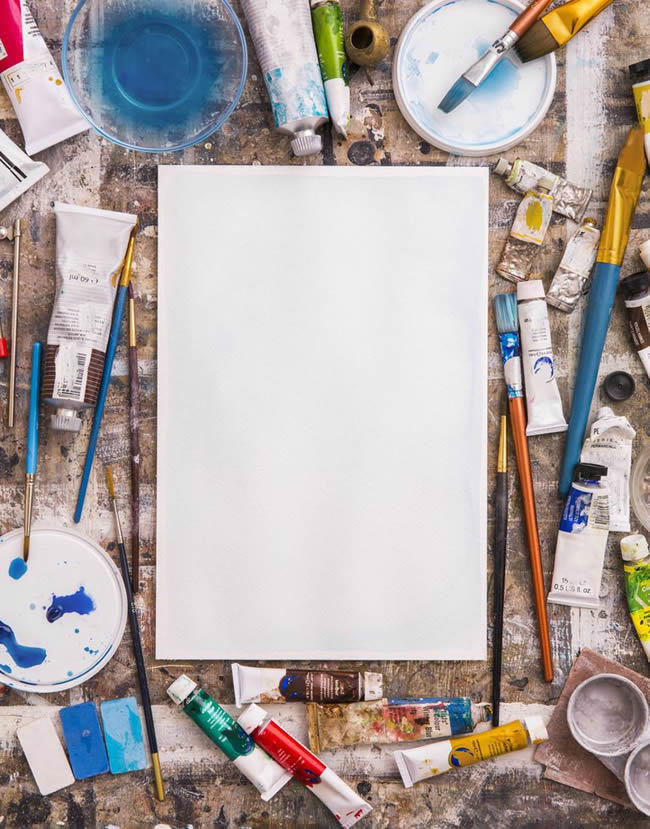
Spending on art supplies can quickly add up. There's something about the potential of a blank canvas, a pad of paper, and a new paint color that's irresistible. But unless you've won the lottery (unlikely), have a patron (even less likely), or enjoy enacting the role of starving artist (are you insane?), it's sensible to make art materials part of your monthly budget.
This doesn't mean you have to buy cheap and horrible paints. On the contrary, top quality artist's paints mixed with some medium can go surprisingly far and give a better result than poor quality paints with a low pigment loading. Here are various ways you can save money on art supplies.
1. Paint Smaller
Not only do ready-made canvasses go up in price with size, but a smaller one has less surface area to cover, so you'll use less paint. Switch to canvas one size down from what you use most often. Budget for treating yourself in your birthday month to a big canvas (and some extra paint).
2. Recycle Canvasses
How many unfinished paintings have you got lying around? Go through them and select those you're never going to finish (be honest with yourself!) and those you no longer like. Don't paint over them with gesso or primer (which is designed to be a base layer) but rather white paint. (Student quality, not your best white.)
3. Recycle Painting Paper
There's nothing to say a painting can be done on one side of a piece of paper only. If there's nothing showing through, there's no reason not to do another painting on the back. And even if there is, you may be able to incorporate it into the new painting.
Watercolor can often be lifted off by re-wetting it a damp cloth or sponge, and then dabbing it off. Be careful not to scrub the surface of the paper as you may damage the paper fibers. It might also lift off too much of the sizing; you can tell if when you're reusing the sheet the paper spreads horribly.
Failed paintings done on paper can be torn up for collage or mixed media. Or stuck to canvas for mixed media and texture. You can even shred it up and make new paper.
4. Use Less Paint
A tube of paint goes much further if you're painting with glazes rather than impasto. If you want to build up texture, use texture paste and/or student acrylic paint initially. You can paint over this with either acrylics or oils. Or use collage elements to create background color and texture.
5. Use Student Paint for the Underpainting
Establish the foundation of your painting and work out the composition (if you prefer not to plan this beforehand) with cheaper paint. Such as student's quality paint or the cheaper pigments in a paint range.
6. Make Your Own Student Paint
Instead of buying another set of colors, mix your artist's quality paint with medium to make your own student's paints. The colors will still be intense because of the pigment loading in the paint you're diluting. And there's the advantage that the colors will mix well and with similar results.
7. Limit the Number of Colors
Resist the temptation of new colors, of believing this or that color is just what you need to solve this or that problem. Get to know a handful or two of colors well. The properties of each and what it does when mixed or glazed with each of the colors. You'll be pleasantly surprised by what you can do with what may seem like only a few colors.
8. Limit the Number of Brushes
Likewise, resist the temptation to buy every single size of brush there is, in every single type of hair. You don't need every size of paint brush that exists. There will be one or two brushes you use most often. Stick to these and budget to replace them when they wear down.
